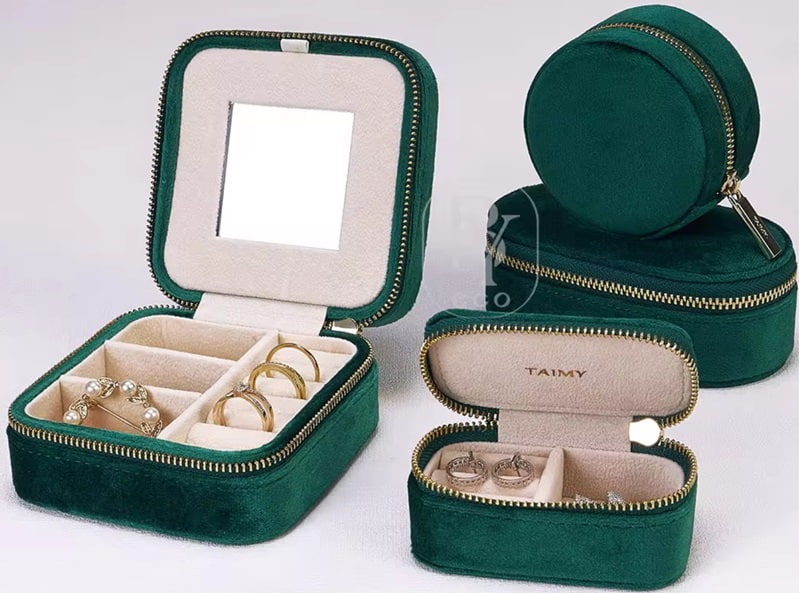You can share
- Share to Facebook
- Share to Google+
- Subscribe to our
- Share to Linkedin
- Share to Twitter

According to statistics, 82% of consumers reduce the frequency of wearing jewelry due to entanglement/loss of jewelry, while professional jewelry practitioners can store more than 50 pieces of jewelry in a 20cm³ space through scientific storage. This article will reveal the industry-level space utilization rules. Whether individual users are looking for daily storage solutions or practitioners are optimizing product design, they can obtain a directly reusable methodology.
Solution:
(1) Magnetic suspension layer (increase capacity by 30%)
Install a tray with a magnetic suction function on the lid to store small items such as earrings and cufflinks
It is recommended that the magnet strength be ≥1200 Gauss to ensure stability
(2) Liftable partition column
Adjust the height of the column by rotation to adapt to different necklace lengths
Reference size: column diameter 0.8cm, adjustment range 5-15cm
(3) Drawer-style interlayer
Set a 1.5 cm-thick drawer at the bottom of the box to store accessories such as ring gaskets and maintenance cloths
Practitioner insight: Japan MUJI's popular jewelry box uses a 0.3mm tempered glass layer, which can bear a load of 2kg and is transparent and space-saving

DIY modification guide:
Use hot melt glue to fix the red wine cork slices on the bottom plate to make a ring slot
Use an old glasses cloth to make a scratch-resistant partition pad after wax treatment
Innovative material solutions:
(1) Aviation aluminum frame: strength increased by 5 times, wall thickness can be compressed to 1.2mm
(2) Memory foam lining: pressed and molded to fit the shape of jewelry, reducing the required space by 30%
(3) Antibacterial silk: 0.3mm ultra-thin texture, replacing traditional flannel and saving a 2mm layer height
Experimental data: Using honeycomb structure EVA lining, the jewelry storage capacity under the same volume increased by 42%.
Three major intelligent solutions:
(1) Lego-style splicing system: free combination of multiple unit boxes through side card slots
(2) Rotating tower structure: three-layer turntable design, reducing the floor space by 60%
(3) Air pressure lifting device: Press the button to automatically raise the second storage layer
Industry case: Tiffany's Atlas® series modular jewelry box achieves 300% capacity flexibility through component expansion
Ultimate compression solution:
Vacuum compression bag: with anti-oxidation aluminum film, the thickness is reduced from 5cm to 1cm
Scroll design: The silicone storage bag can be rolled up for storage, and unfolded to a 40cm necklace position
Multi-functional structure: The mirror cover has 24 built-in micro earring positions, and the powder compartment is transformed into a ring storage area
Actual data: The travel jewelry box using the scroll solution can be placed in the interlayer of the cabin luggage and can accommodate 15 pieces of jewelry
Four golden rules of product design
(1) 7:2:1 partition principle: 70% general space + 20% special accessories area + 10% expansion reserved space
(2) Ergonomic opening and closing angle: The 105° box cover opening angle is most convenient for taking and placing
(3) Tactile navigation system: Braille logo + differentiated surface treatment (matte/glossy)
(4) Light management: Add UV filter film to allow display while blocking 97% of harmful ultraviolet rays
Frequently Asked Questions (FAQ)
Q: Can a small jewelry box store fragile materials such as pearls?
A: It is necessary to ensure that there is a humidity adjustment layer (it is recommended to maintain 45- 55% RH) and an independent soft grid
Q: How to prevent jewelry from oxidation when stored densely?
A: Three-step protection method:
1. Place a deoxidizer bag (2g per liter of space)
2. Wrap easily oxidized jewelry with a silver cloth
3. Sterilize with a UV disinfection box every month
Space efficiency = storage science × design aesthetics
Through innovations in three dimensions: three-dimensional layering, smart materials, and dynamic expansion, small jewelry boxes have broken through physical limitations and become an efficiency revolution in jewelry management. Whether it is a 20cm³ storage box used by consumers every day or a display package developed by practitioners, mastering these proven methodologies can make limited space generate infinite value.